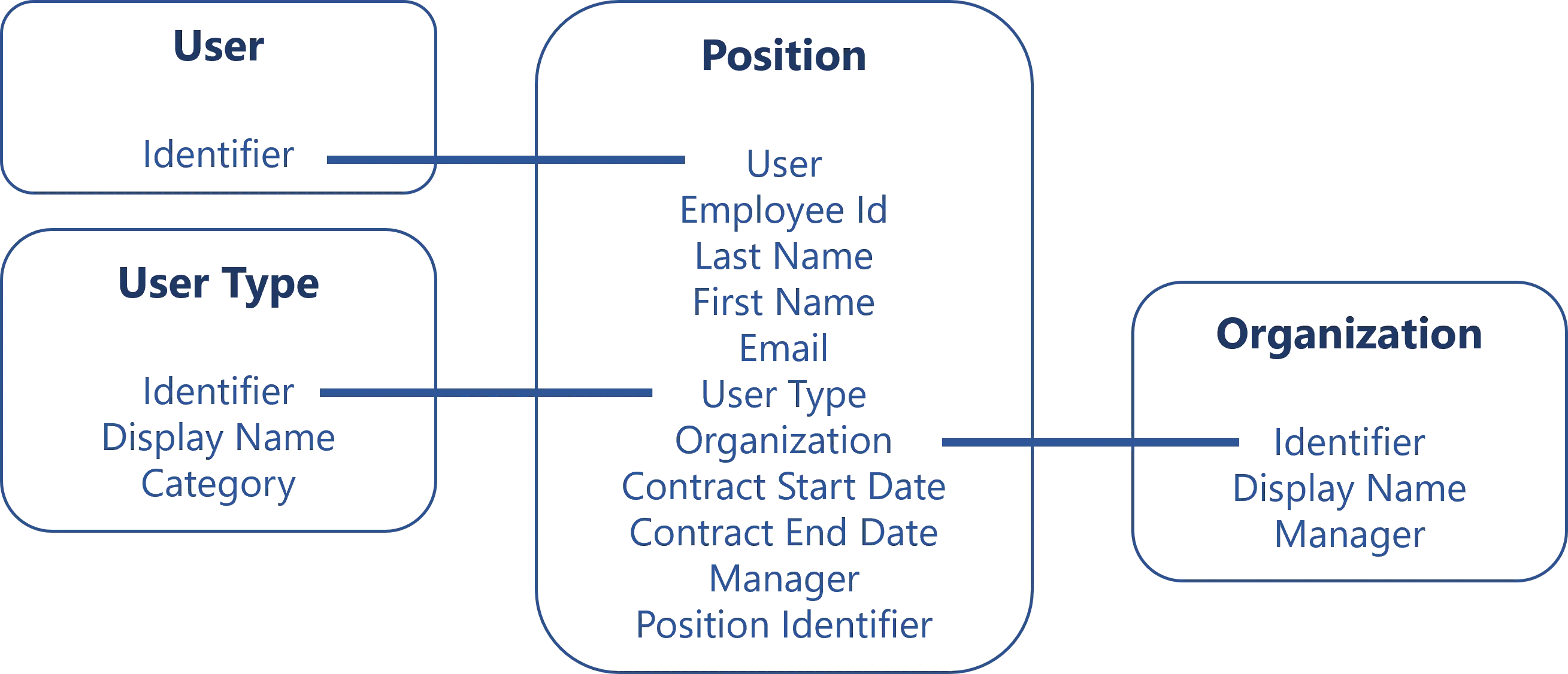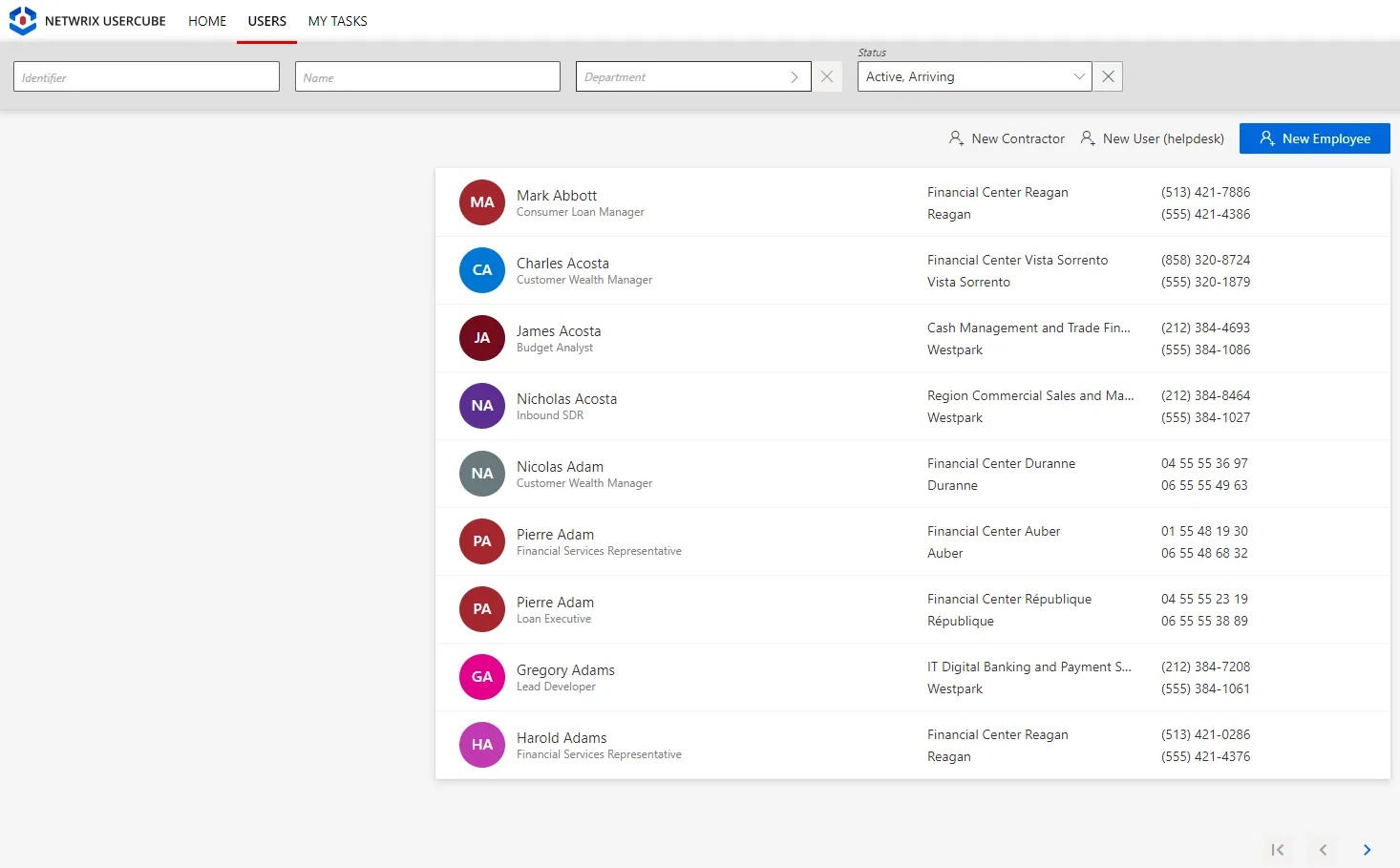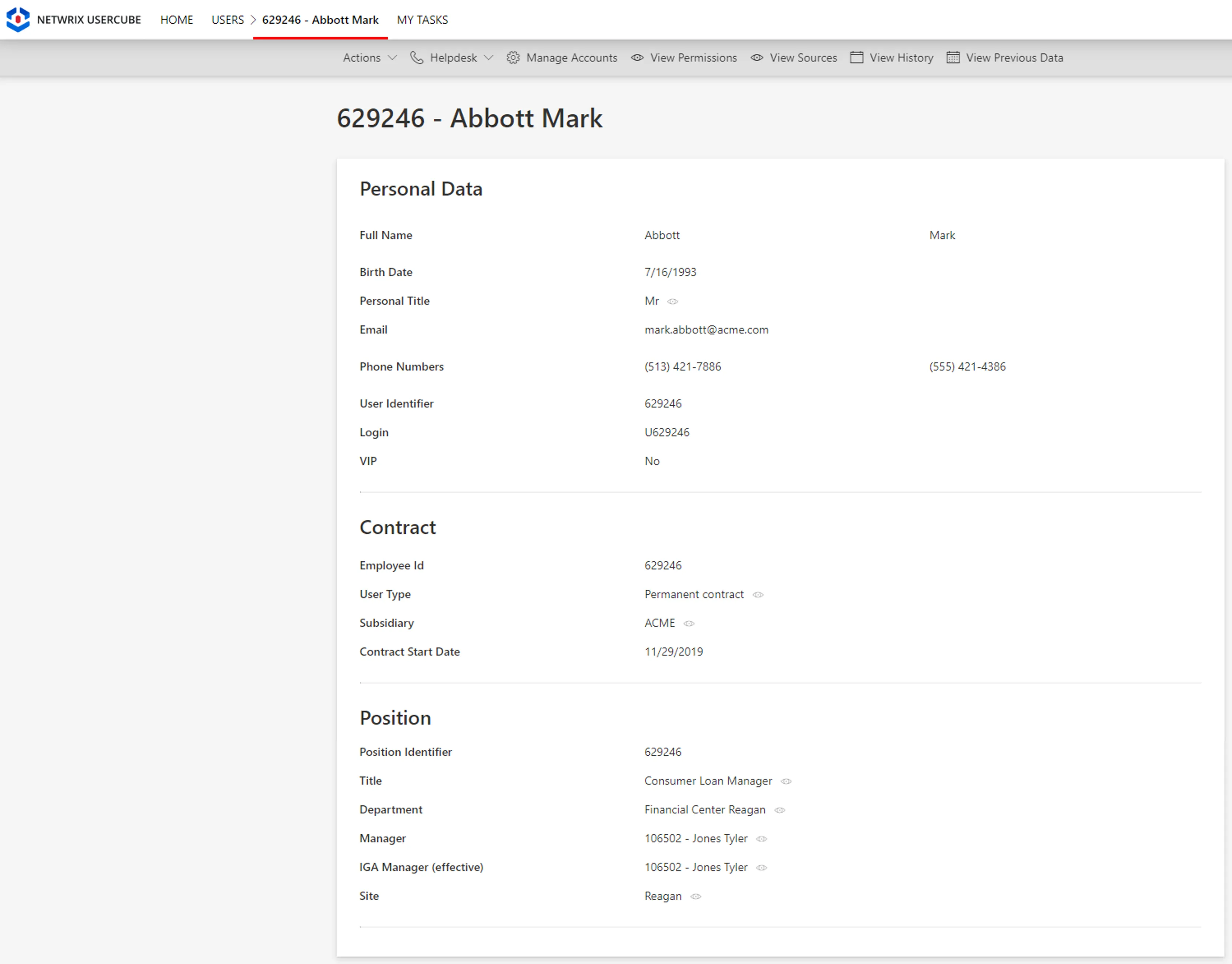Identity Repository
One of the main purposes of an IGA tool is to build a comprehensive repository containing all identities in the organization. This repository is essential in order to set up the features for identity lifecycle management, and manage entitlement assignments.
Overview
The identity repository is supposed to contain the list of all kinds of identities in the company. Each identity will be represented by a set of properties that are to be used in the calculations for entitlement assignments.
For example, a user can be represented by an identifier and linked to their position which includes the user's employee id, last name and first name, email, user type, organization, etc.
In Identity Manager, the identity repository can look like the following:
The identity repository can be created and updated by:
- uploading an Excel file provided by Identity Manager with the right model;
- using Identity Manager's workflows;
- synchronizing HR files to Identity Manager via a specific connector.
Netwrix Identity Manager (formerly Usercube) recommends creating the identity repository by downloading the provided Excel file, filling it with HR information, and uploading it back. See the Create the Workforce Repository topic to learn how to create the workforce repository.
Then perform mass updates with the same kind of process, and update an Individual Identity via Identity Manager's workflows. See the Update Identities in Bulk and Update an Individual Identity topics for additional information.
Useful data
Not all data is useful for identity governance and administration. Thus, to start designing the repository, you must be aware of which data is necessary and which is unhelpful. Useful data is the data that:
-
needs to be provisioned to the managed applications;
For example, if you need to provision users' phone numbers in a given application, then you should fill in the workforce repository's
Phone Numberproperty. -
is needed to manage identities' lifecycles;
For example, consider that internal employees must be managed by HR officers only, then you'll need to identify whether users are internal employees or external contractors. Then you should make sure that you fill an
Employee Typeproperty with at least two values: one for internal employees, and one for external contractors. -
is needed to automatically grant permissions.
For example, if a user's position title ("manager" for instance), defines what users currently do, and thus what permissions they need, then you should make sure to fill in a property storing the position's title in the workforce repository.


